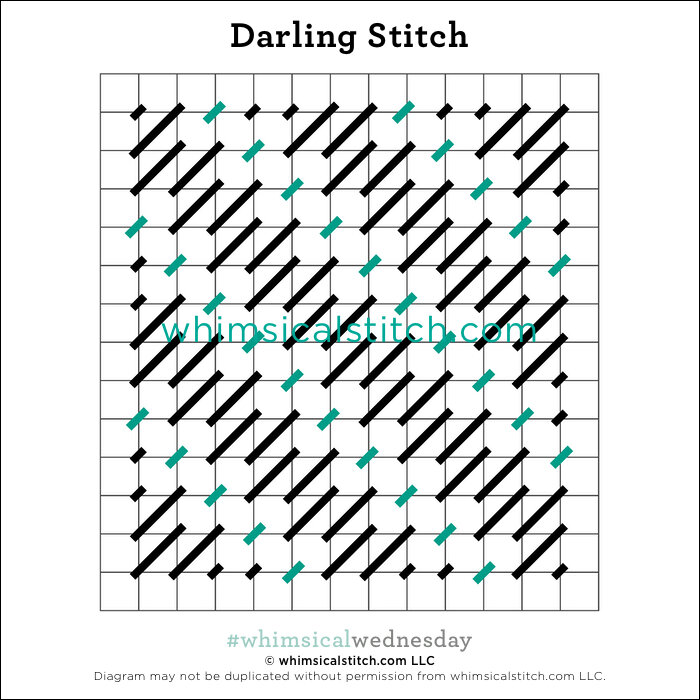And Santa needs a coat.
Today's stitch is a pared down version of a layered stitch I came across in a book. As you will see on the stitched sample on Instagram, there is nothing special about the canvas that shows through, but the open area is a great way to add lightness to a stitched area.
I named the stitch "Tied Squares." It's a combo of Scotch Squares in alternating directions and Oblong Upright Crosses connecting the squares.
I suggest adding the squares first, followed by the Oblong Upright Crosses. The diagram below is my personal preference for the stitch sequence for the crosses.
If you choose to do a different sequence on the crosses, I strongly recommend you do the exact same sequence on all crosses. It will maintain the stitch symmetry and pattern.
So, a little insight on layered stitches. They are a wonderful way to add color and pattern to a canvas and there are times layered stitches are perfect. However, don't forget to look at the cumulative total of the steps. Sometimes you only need to do a portion of them. The original diagram for this stitch included another set of oblong crosses in the open area. And that's a great idea, especially if you want to add another color, but I loved the simplicity of the first two steps.
This stitch diagram, along with other #whimsicalwednesday and #smallspacesunday stitch diagrams, can also be found on www.pinterest.com/whimsicalstitch/whimsicalwednesday.
Be sure to follow whimsicalstitch.com on Facebook, Pinterest, Instagram, and Twitter.
If you like what you see on this blog, want to learn some very creative decorative stitches, and how to put them all together, whimsicalstitch.com sells stitch guides for seasonal Melissa Shirley designs. 18 guides are currently available and more are in the pipeline.
Enjoy!


















